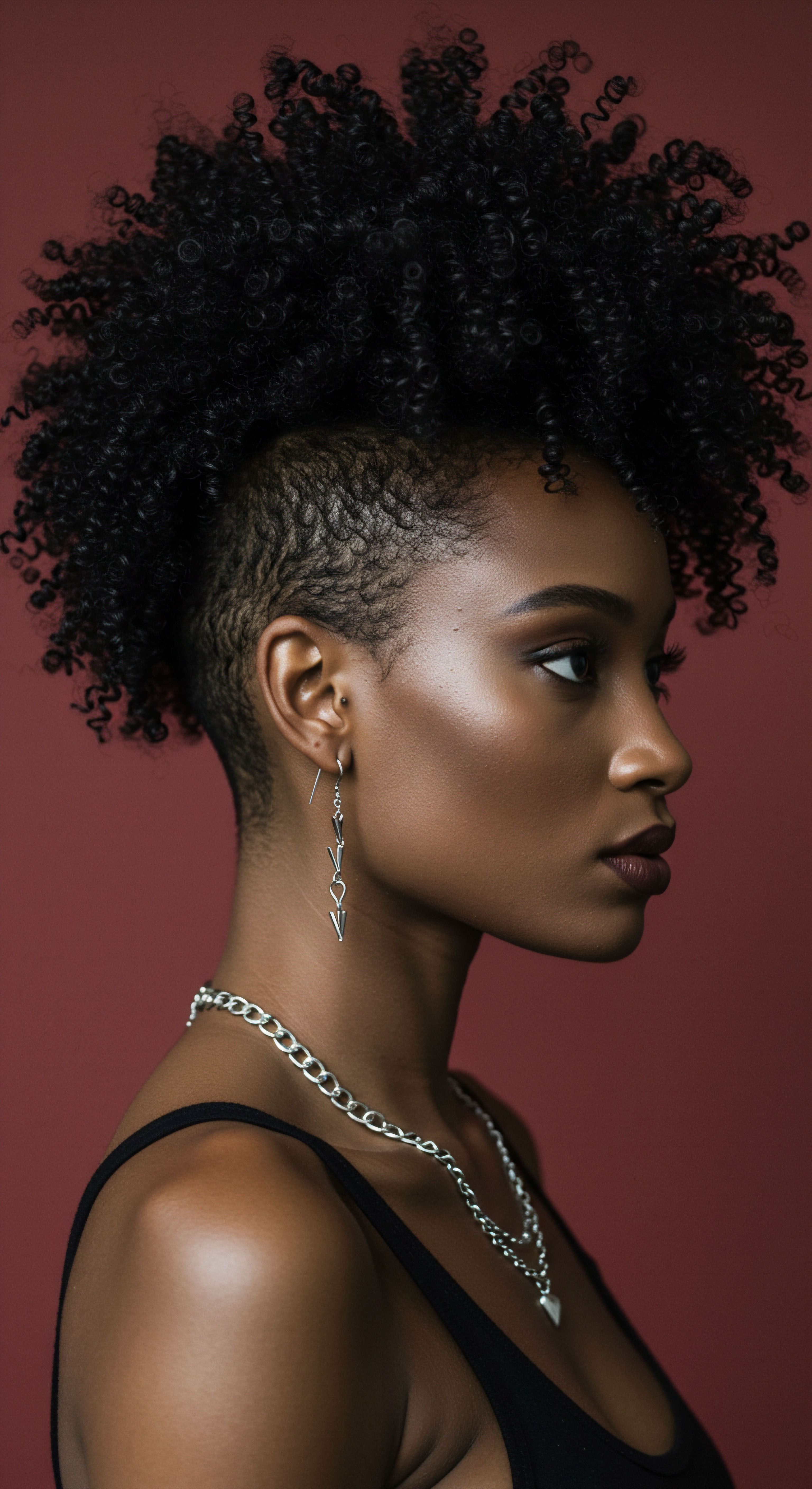
Roots
The quiet inquiry of whether a bonnet, a cherished nighttime companion for many with textured hair, could ever bring about scalp irritation over time is a contemplation that touches upon the very foundations of hair care. It beckons us to look closely at the unseen, the subtle interactions happening beneath the soft fabric as we rest. Our strands, with their unique twists and turns, their thirst for moisture, are not merely adornment; they are a living part of us, deeply connected to the health of our scalp. Understanding this delicate ecosystem, from the root beneath the skin to the visible lengths, provides the groundwork for unraveling the mysteries of scalp well-being.
The scalp, a dynamic landscape often hidden beneath a canopy of curls, coils, or waves, acts as a primary protector for our cranial bones. Its surface, rich with hair follicles, sebaceous glands, and sweat glands, operates as a barrier, preventing water loss and shielding against external influences. This protective shield, known as the stratum corneum, functions like a meticulously arranged wall, composed of dead skin cells held together by a lipid matrix. A healthy stratum corneum is essential for preserving the scalp’s equilibrium and guarding against oxidative stress that could harm emerging hair.
Factors such as disease, hormones, temperature, humidity, and even the products we use can influence its performance. When this barrier is compromised, the scalp may experience dryness, itchiness, and even flaking.
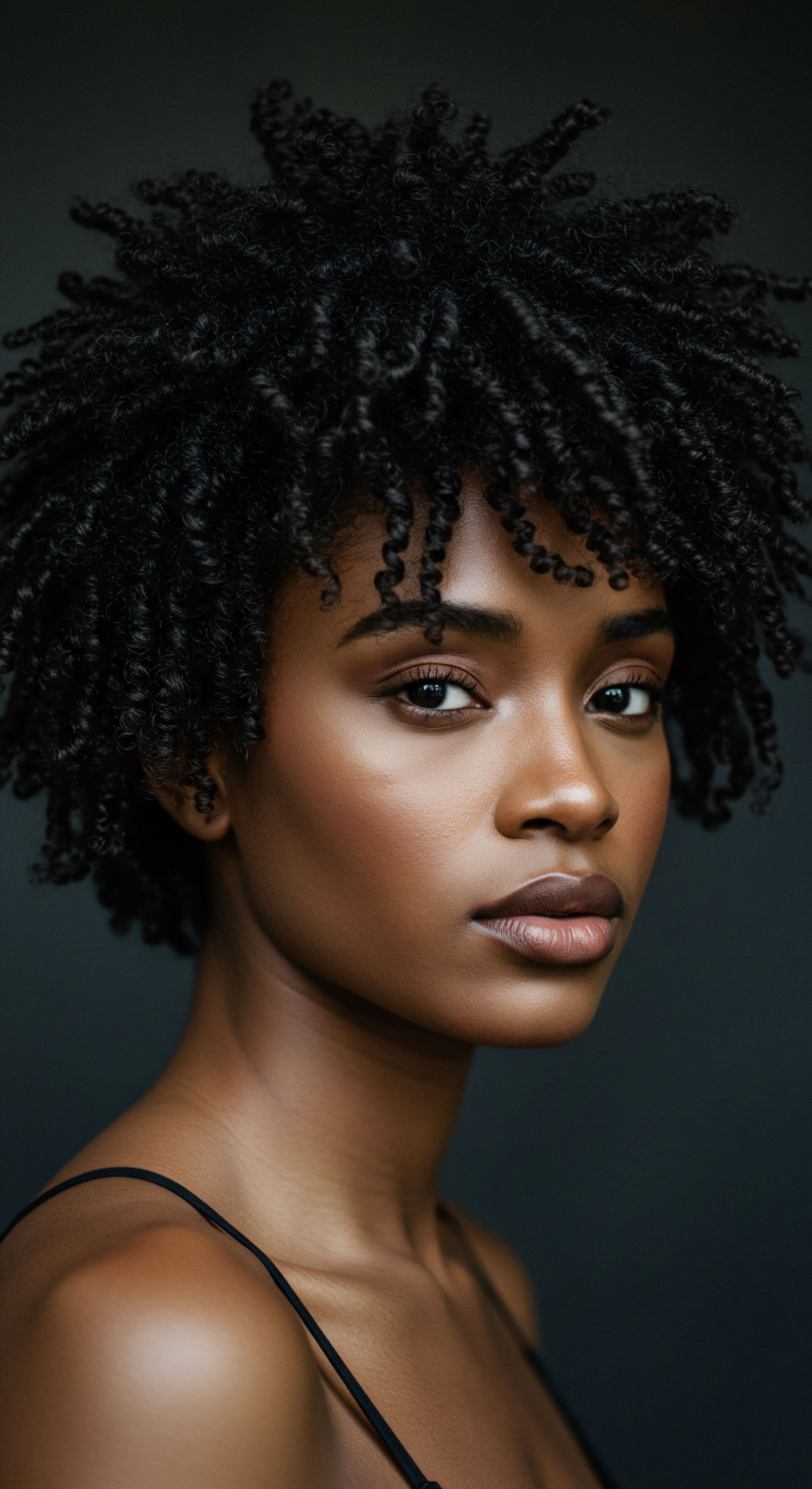
Understanding the Scalp’s Unique Environment
The scalp is not merely skin; it is a distinct microenvironment. Unlike other areas of the body, it possesses a higher density of hair follicles and a greater concentration of sebaceous glands, which produce sebum, a natural oil. This oil, along with moisture and the scalp’s naturally acidic pH (typically between 4.5 and 5.5), creates a particular habitat for a diverse community of microorganisms, collectively known as the scalp microbiome. This intricate balance of bacteria and fungi is crucial for maintaining scalp health, modulating inflammatory responses, and providing defense against infections.
A shift in this microbial balance, or dysbiosis, can lead to various scalp conditions, including flaking, itchiness, and even hair thinning. For instance, the fungus Malassezia, a common resident of the scalp, can, when overgrowing, contribute to flaking and seborrheic dermatitis. Similarly, bacteria such as Cutibacterium Acnes and Staphylococcus Epidermidis also play roles in this complex ecosystem.
The scalp’s unique environment, with its abundant hair follicles and sebaceous glands, hosts a delicate microbial community vital for overall scalp well-being.
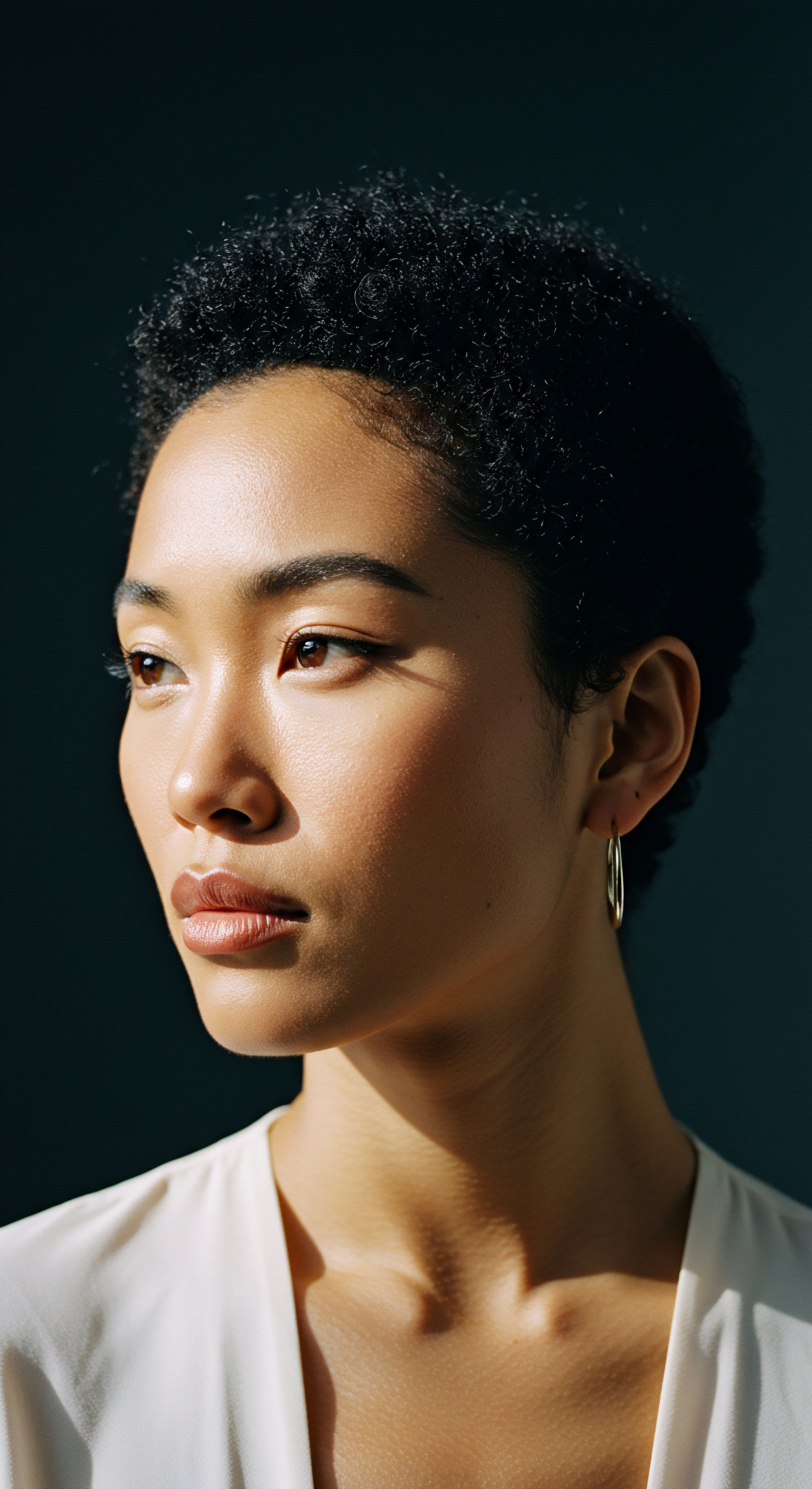
The Role of Hair Follicles in Skin Health
Beyond simply producing hair, hair follicles themselves contribute to the skin’s barrier performance. Research indicates that the upper part of the hair follicle forms a functional barrier, and disruptions in this area can elicit responses in the surrounding epidermis. This suggests a deeper, more interconnected relationship between hair follicles and the overall health of the scalp’s protective layer.
Considering these foundational aspects of scalp biology, the simple act of wearing a bonnet takes on a deeper meaning. It introduces an external element into this finely tuned microenvironment, potentially influencing factors like temperature, humidity, and friction, which in turn could ripple through the scalp’s delicate balance.
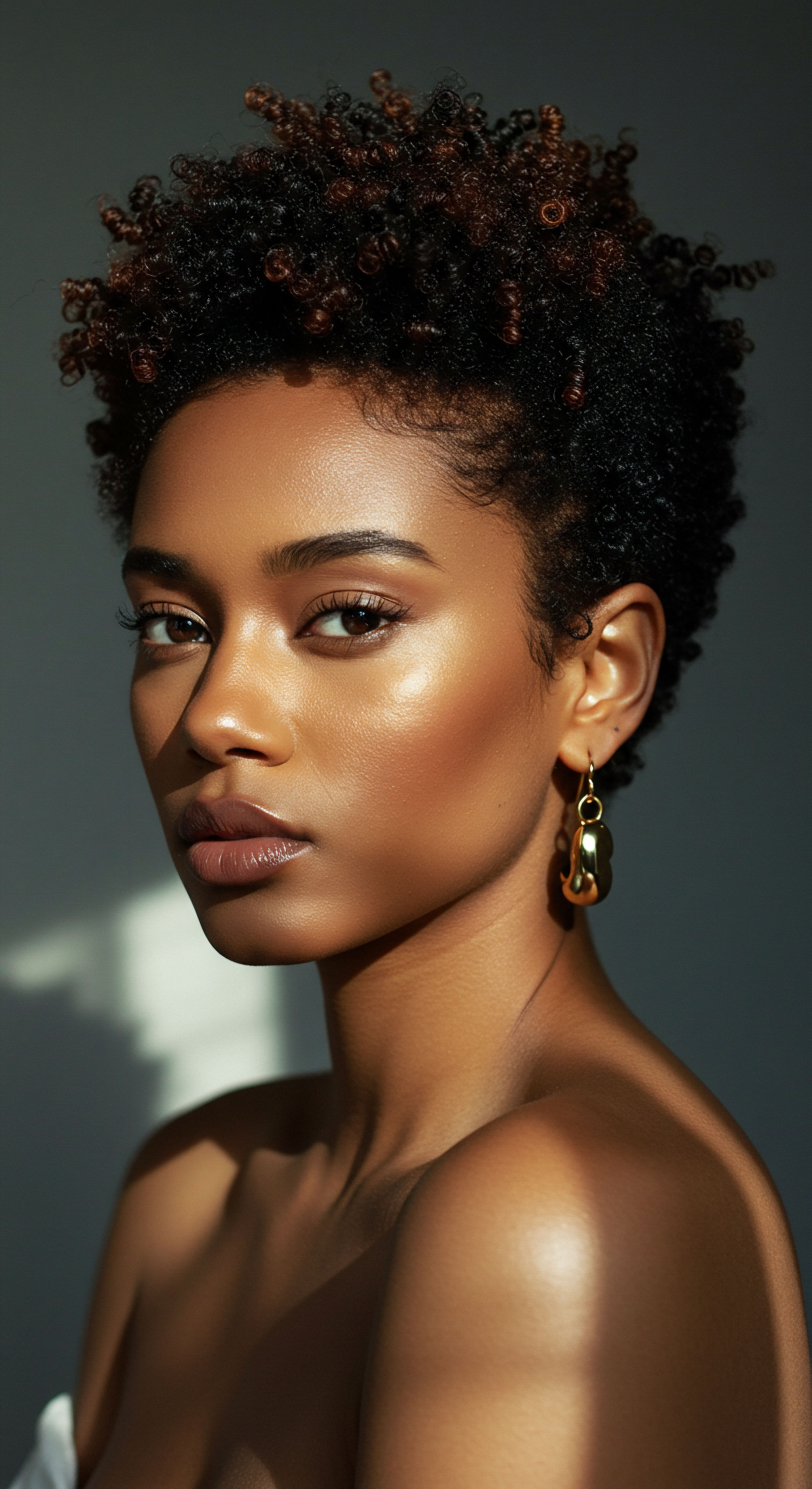
Ritual
Stepping into the realm of nightly rituals, where bonnets become a silent partner in hair care, we begin to explore the practical wisdom that guides their use. The choice to cover one’s hair before sleep often stems from a desire for preservation—to shield delicate strands from the rigors of tossing and turning, to keep styles intact, and to guard precious moisture. This practice, woven into the fabric of many textured hair routines, is a testament to mindful self-care. Yet, even in the most nurturing of habits, understanding the subtle interplay between accessory and anatomy becomes paramount.
Bonnets, typically crafted from smooth materials like silk or satin, are celebrated for their ability to reduce friction between hair and coarser fabrics, such as cotton pillowcases. Cotton, with its absorbent nature and rougher fibers, can draw moisture from hair and create mechanical stress, leading to breakage, split ends, and frizz. Silk, by contrast, offers a remarkably smooth surface, minimizing this friction and allowing hair to glide freely. It also possesses superior moisture management properties, absorbing significantly less hydration from the hair compared to cotton, thus helping to preserve the hair’s natural moisture balance.
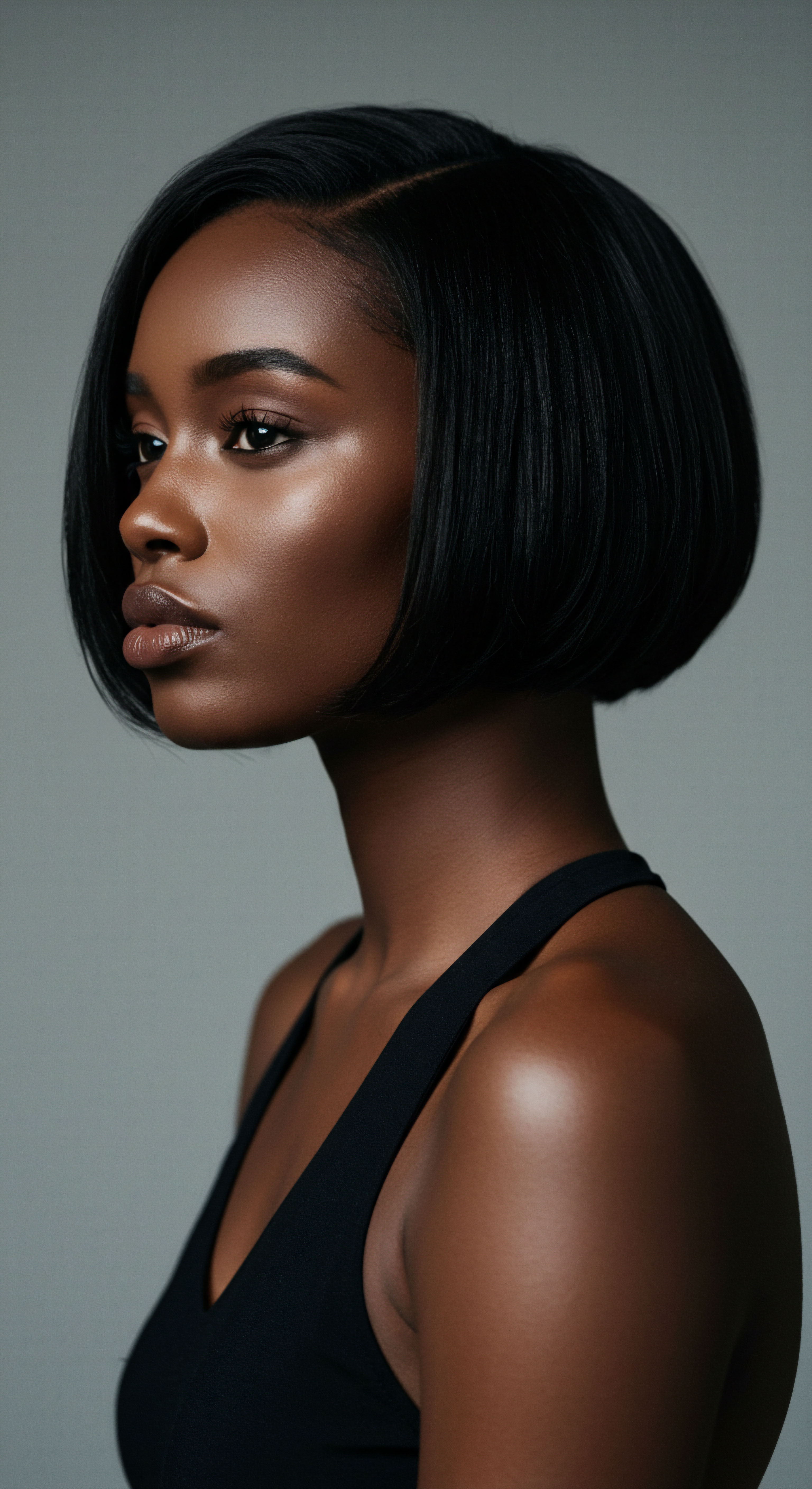
Selecting the Right Bonnet Material
The material of a bonnet is a primary consideration for scalp health. While both silk and satin are popular for their smooth qualities, there are distinctions worth noting.
- Silk ❉ A natural protein fiber, silk, particularly mulberry silk, contains amino acids that are highly compatible with human hair. Its natural smoothness reduces friction significantly. A 2020 study highlights silk’s hydrating and breathable properties, supporting hair’s natural moisture and reducing breakage.
- Satin ❉ Often a weave, satin can be made from various fibers, including synthetic ones like polyester or nylon. While satin can feel smooth, synthetic satin may have a higher friction level than natural silk and can be less breathable, potentially trapping heat and moisture. Satin woven from real silk, however, combines the benefits of the weave with the natural properties of silk.
- Cotton ❉ While comfortable for clothing, cotton is generally not recommended for hair coverings due to its high absorbency and rough texture, which can strip hair of moisture and cause friction-induced damage.
The breathability of the chosen material also holds weight. Silk, known for its high breathability, allows for air circulation, which helps regulate temperature and prevents excessive moisture from accumulating from sweat or oils. Synthetic satins, being less breathable, might create a warmer, more humid environment.

How Can Bonnet Fit Influence Scalp Well-Being?
The way a bonnet fits can subtly influence the scalp’s comfort and health. A bonnet that is too tight can exert constant pressure on the hairline and scalp, potentially leading to discomfort or even a form of hair loss known as Traction Alopecia. This condition results from prolonged tension or pulling on hair follicles, causing gradual damage. Conversely, a bonnet that is too loose may shift during sleep, causing friction and negating some of the protective benefits.
The ideal bonnet offers a secure yet gentle hold, allowing for air circulation while staying in place. Adjustable bands can be beneficial in achieving this balance.
A well-fitting bonnet, made from a breathable, smooth material, forms a protective cocoon for hair, minimizing friction and preserving moisture.
Consideration of the bonnet’s cleanliness is also a practical step in preventing irritation. Like any textile in close contact with the skin, bonnets can accumulate oils, product residue, and microorganisms over time. Regular washing, similar to pillowcases, helps maintain a hygienic environment for the scalp. Unclean headwear, especially when worn for extended periods, can foster bacterial and fungal growth, potentially leading to scalp irritation or infections.
In the gentle cadence of nighttime routines, the bonnet serves as a quiet guardian. Its effectiveness in promoting scalp and hair well-being rests upon thoughtful choices in material and fit, ensuring that the ritual of protection truly nurtures.

Relay
As we move beyond the foundational understanding and daily practices, a deeper inquiry arises ❉ can the consistent use of a bonnet, despite its protective intentions, inadvertently lead to scalp irritation over time? This question invites us to examine the intricate dance between external factors and the delicate internal environment of the scalp, drawing upon the insights of science, cultural practices, and nuanced physiological responses. The answer is rarely a simple yes or no; rather, it unfolds within the complex interplay of material science, microclimate dynamics, and individual scalp sensitivities.
The concept of occlusion, where a barrier covers the skin, is central to this discussion. In dermatology, occlusion therapy is often used to enhance the penetration of topical treatments by increasing skin hydration and absorption. However, prolonged occlusion can also bring about changes to the skin barrier function.
Studies suggest that extensive and long-term occlusion can lead to barrier impairment, particularly when combined with exposure to irritants like soaps or detergents. This effect is rooted in the increased water content within the stratum corneum, which, while initially beneficial, can, in excess, disrupt the delicate lipid barrier.

Does a Bonnet Create a Detrimental Scalp Microclimate?
A key consideration is the microclimate created beneath a bonnet. Wearing any head covering for extended periods can lead to a localized increase in temperature and humidity on the scalp. This warm, moist environment can become a hospitable breeding ground for certain microorganisms, such as the Malassezia yeast, which is naturally present on the scalp. While Malassezia is a normal inhabitant, its overgrowth is a primary cause of dandruff and seborrheic dermatitis, conditions characterized by flaking, itching, and redness.
A study comparing the scalp microbiome of hijab-wearing women to non-hijab-wearing women in a tropical country found differences in microbial composition. Women consistently wearing hijabs were observed to have a higher presence of Staphylococcus Capitis and Malassezia Restricta on their scalps, while non-hijab wearers showed more Staphylococcus Cohnii and Malassezia Globosa. These findings suggest that consistent head covering might predispose individuals to certain scalp conditions like seborrheic dermatitis due to shifts in the microbial balance.
The microclimate beneath a bonnet, particularly one of less breathable material, can alter the scalp’s delicate balance, potentially favoring microbial overgrowth.
The scalp’s ability to thermoregulate also plays a part. Scalp hair itself helps in adapting to increases in skin temperature caused by occlusion, and sweat production is a natural response to temperature elevation, which can increase scalp hydration. However, if this sweat and moisture are trapped by a non-breathable fabric, it can contribute to the humid microclimate that might irritate the scalp.
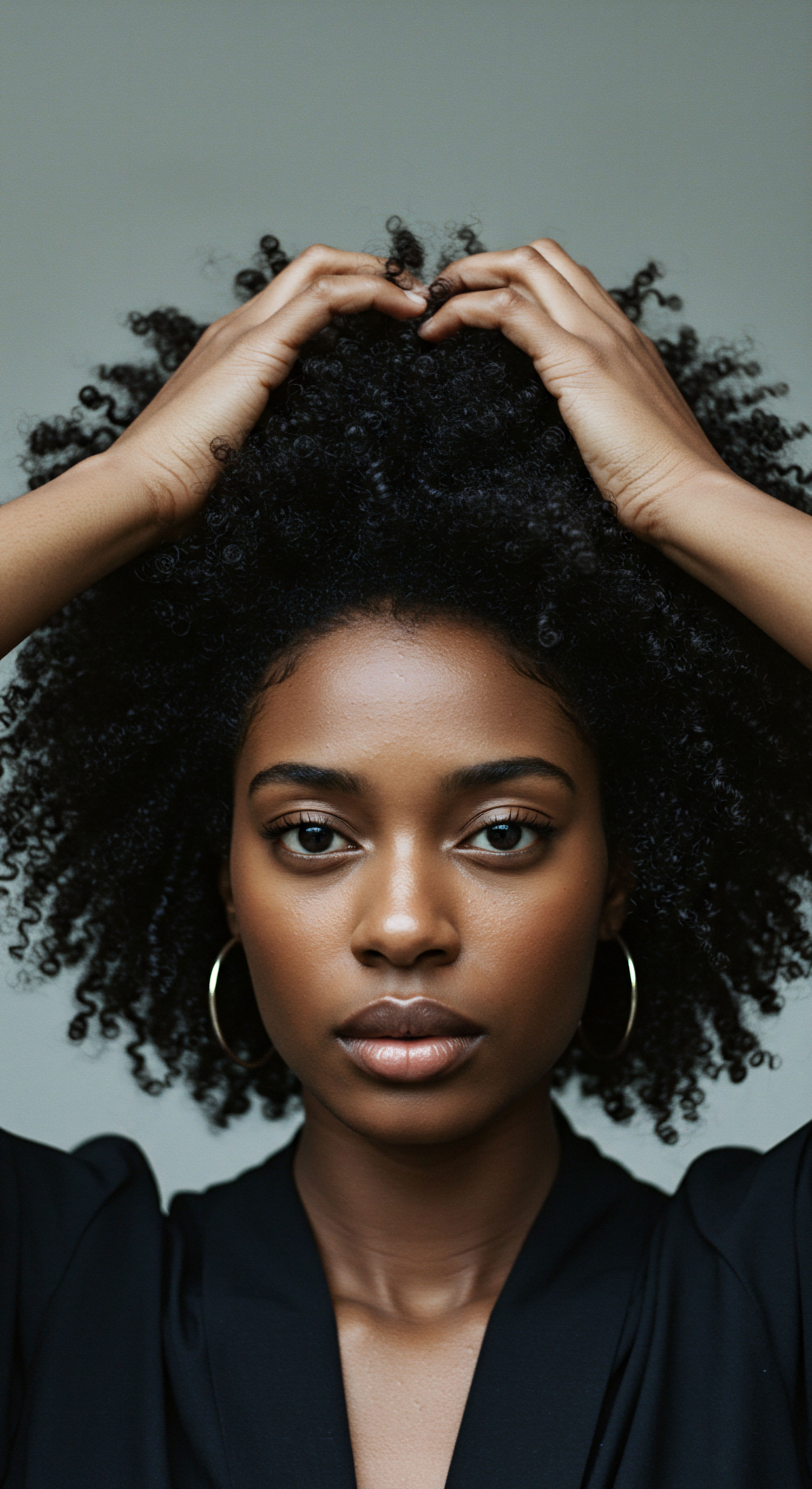
Are Certain Bonnet Materials More Prone to Causing Irritation?
The material of a bonnet significantly influences its interaction with the scalp and hair.
| Material Type Silk |
| Key Properties for Hair/Scalp Smooth, low friction, breathable, less absorbent of hair's natural moisture. |
| Potential Scalp Impact Generally low risk of irritation; supports moisture balance and airflow. |
| Material Type Satin (Synthetic) |
| Key Properties for Hair/Scalp Smooth, but potentially higher friction than silk, less breathable, can trap heat/moisture. |
| Potential Scalp Impact Higher potential for moisture build-up and microbial growth due to reduced breathability. |
| Material Type Cotton |
| Key Properties for Hair/Scalp High absorbency, rougher fibers, can cause friction and strip moisture. |
| Potential Scalp Impact Increased risk of dryness, friction-induced irritation, and moisture imbalance. |
| Material Type Polyester |
| Key Properties for Hair/Scalp Can generate electrostatic potentials, less breathable. |
| Potential Scalp Impact Potential for inhibited hair growth and increased friction, leading to irritation. |
| Material Type Understanding material properties helps in selecting bonnets that minimize irritation risks. |
A notable study on the impact of textiles on hair growth, though conducted on dogs, presents a thought-provoking perspective. This research revealed that polyester material, when covering shaved skin, generated electrostatic potentials that appeared to inhibit hair growth, whereas cotton and wool textiles did not. The friction between the polyester textile and the skin created electrostatic charges, which were suggested to be responsible for this observed effect. While direct applicability to human scalp irritation from bonnets requires further human-specific research, it highlights how different textile materials can have unexpected physiological interactions beyond simple friction or moisture absorption.
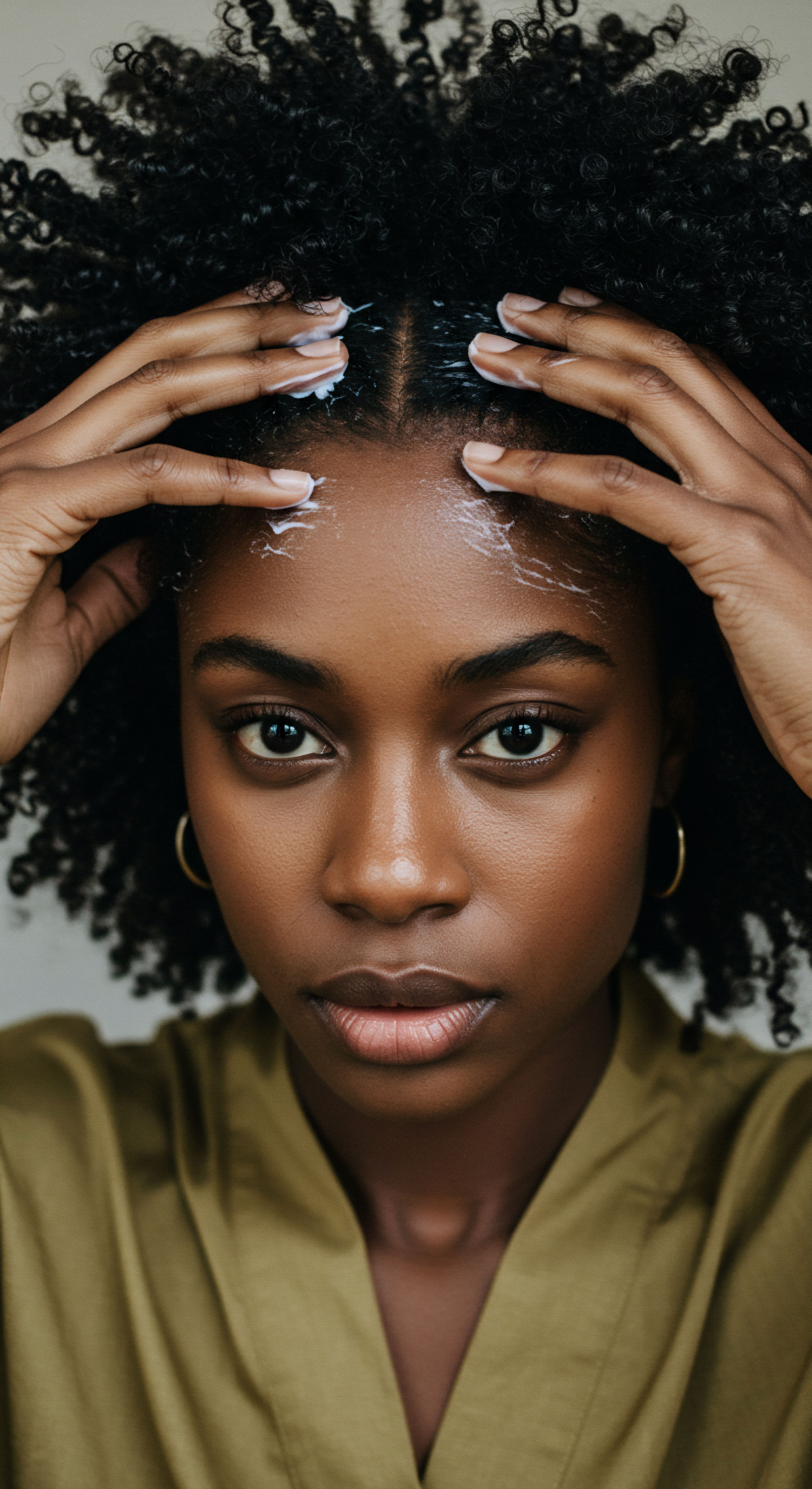
Considering Underlying Scalp Sensitivities
Individuals with pre-existing scalp conditions, such as eczema, psoriasis, or contact dermatitis, may find their sensitivities exacerbated by prolonged bonnet wear, especially if the material or fit is not optimal. The occlusive environment could worsen inflammation or trigger allergic reactions if the bonnet contains dyes or finishes to which the individual is sensitive. The integrity of the skin barrier, already compromised in many scalp conditions, becomes even more critical. A weakened barrier is more susceptible to irritants and microbial colonization, perpetuating cycles of inflammation.
While bonnets offer significant benefits for hair preservation, their continuous use necessitates an awareness of the potential for scalp irritation. The science points towards a careful consideration of material breathability, proper fit to avoid tension, and consistent hygiene. The journey to serene strands is one of informed choices, balancing protection with the scalp’s inherent need for a balanced, healthy environment.
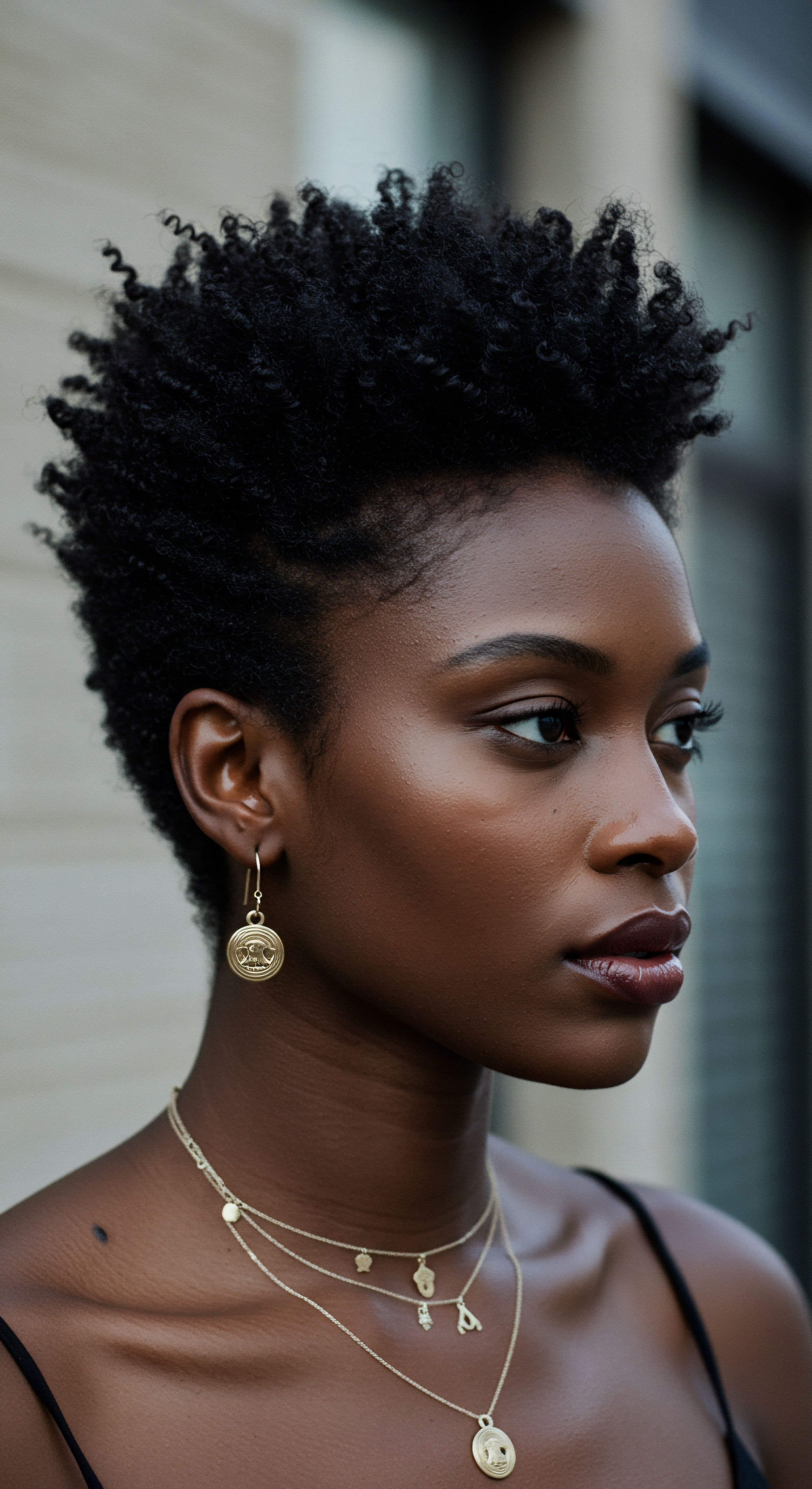
Reflection
The contemplation of a bonnet’s impact on our scalp over time invites a thoughtful pause, a moment to consider the deeper connections between our daily rituals and our body’s delicate balance. It reveals that even the simplest acts of care carry a nuanced interplay of factors, from the silent dance of microbes to the subtle breath of a chosen fabric. The journey toward radiant hair is not a linear path but a continuous conversation with our unique physiology, our cultural heritage, and the evolving wisdom of science. By honoring the whispers of our scalp and understanding the intricate world beneath our bonnets, we step closer to a harmony that celebrates both protection and vitality.

References
- Sato, M. K. Yoshiba, T. Kanda, and T. Tagami. (2023). “Evaluation of Scalp Hydration and pH Values in Hijab-Wearing and Non-Hijab-Wearing Women.” International Journal of Women’s Health, 15, 1693–1702.
- Andriessen, A. N. Mesinkovska, et al. (2018). “Insights on the Impact of Scalp Barrier Condition on Hair Health.” Journal of Drugs in Dermatology, 17(9), 980-986.
- K. C. Madison. (2003). “Barrier function of the skin ❉ “la raison d’être” of the epidermis.” Journal of Investigative Dermatology, 121(2), 231-241.
- Alhanshali, H. et al. (2023). “Religious headwear and alopecia ❉ considerations for dermatologists.” International Journal of Women’s Dermatology, 9(3), e089.
- Kim, S. Shin, S. Kim, S. & Na, Y. (2021). “Understanding the Characteristics of the Scalp for Developing Scalp Care Products.” Journal of Cosmetics, Dermatological Sciences and Applications, 11, 204-216.
- Harkins, J. M. et al. (2021). “The Role of the Scalp Microbiome in Health and Pathogenesis.” Hair Transplant Forum International, 31(6), 234-237.
- Tiedemann, D. et al. (2016). “Effect of glove occlusion on the skin barrier.” Contact Dermatitis, 74(3), 129-136.
- Younes, A. et al. (2014). “Polyester but not cotton or wool textiles inhibit hair growth.” Dermatology Research and Practice, 2014, 584982.
- Rosie Broadhead, Laure Craeye, Chris Callewaert. (2021). “The Future of Functional Clothing for an Improved Skin and Textile Microbiome Relationship.” Microorganisms, 9(6), 1192.
- M. A. Ebrahimi, et al. (2016). “The Influence of Headform/Helmet Friction on Head Impact Biomechanics in Oblique Impacts at Different Tangential Velocities.” Sensors, 16(11), 1952.
- P. L. S. Ramalho, et al. (2016). “Tactile perception and coefficient of friction of fabrics on the volar forearm.” Journal of the Mechanical Behavior of Biomedical Materials, 61, 410-418.